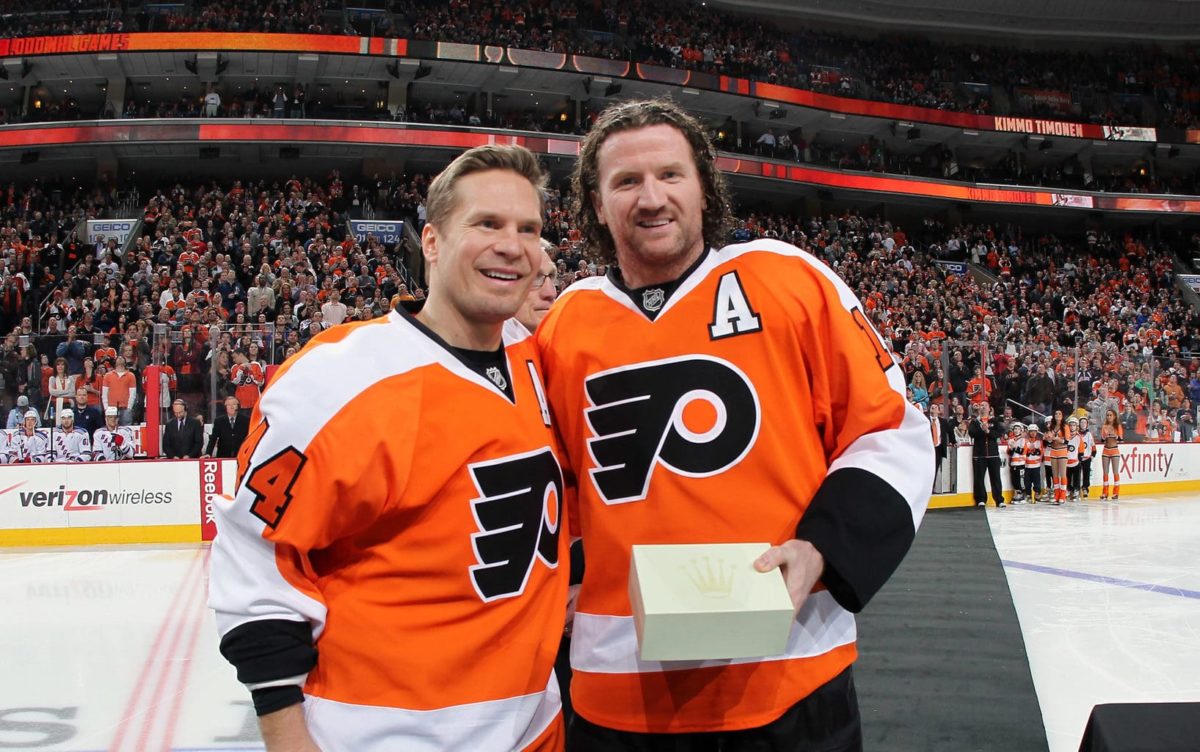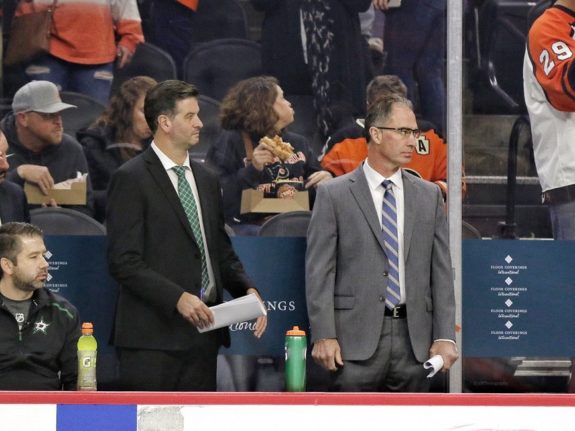The Philadelphia Flyers were in a pretty bad place when they hired John Stevens to be their head coach early in the 2006-07 season after a slow start. Things only continued to get worse, leading to the team’s worst record in franchise history. With it being their first time missing the playoffs since the 1993-94 season, a winning culture was zapped from the team.
Related: Philadelphia Flyers’ Coaching History
Led by Stevens, the Flyers were able to make a historic turnaround from bottom feeder into Stanley Cup contender. He was one of the sparks necessary to make a winning culture find its return to Philadelphia.
Cataclysmic 2006-07 Season
The Flyers were in hot water in their 2006-07 season, which happened to be the 40th anniversary of the franchise. Following a 2005-06 campaign where the team went 45-26-11, they regressed significantly. The now-Hockey Hall of Fame head coach, Ken Hitchcock, was fired after eight games when he held a 1-6-1 record to start. That made the direness of the situation apparent, as he had 19 playoff wins under his belt with the Flyers in just his first three seasons as the coach.
Hitchcock’s replacement was Stevens, the Flyers’ coach of their American Hockey League (AHL) affiliate, then known as the Philadelphia Phantoms. The young coach had no NHL experience, yet had to take over for a Flyers team that had only missed the playoffs seven times in their entire history. He managed to stop some of the bleeding, but the Flyers finished with a franchise-worst 22-48-12 record with him behind the bench. What’s worse, they were not able to land the first-overall pick of the 2007 NHL Draft, even though they had the worst record in the entire NHL.
The Flyers’ 2006-07 campaign was arguably the lowest point of the franchise, yet Stevens was brought back as the Flyers’ head coach for their 2007-08 season. Giving him another chance proved to be the correct decision, and one that helped the Flyers make a swift U-turn into a contender.
Flyers’ Quick Return to Relevance
General manager (GM) Paul Holmgren had an aggressive offseason to try and get his team back to winning hockey games. His first move was a pretty massive one, where he gave up the 23rd-overall selection in the 2007 NHL Draft to the Nashville Predators in exchange for defenseman Kimmo Timonen and forward Scott Hartnell.
Both had expiring contracts, but they were quickly given relatively big deals for the time period. Timonen, 32, was given a six-year contract worth $6.33 million each season. As for Hartnell, he was given a six-year contract that paid him $4.2 million annually. He was a bit younger than the defenseman, only 25, but making that type of bet put Holmgren’s job on the line. He wasn’t just done there, but acquiring the two teammates proved to be one of the smartest decisions he ever made.

During the free agency period, Holmgren and the Flyers went out and got 29-year-old center Danny Briere, who was coming off a 95-point season with the Buffalo Sabres. The price was hefty, as he was given an eight-year contract worth $6.5 million per season. He, Hartnell, and Timonen helped revitalize hockey in Philadelphia. Behind the bench, Stevens put the Flyers back on the map as his first official season as a head coach in the NHL.
The Flyers’ 2007-08 regular season was one filled with both highs and lows. 22-year-old Mike Richards had the Flyers’ lead in points, scoring 75 in just 73 games. The two-way centerman was becoming one of the best in the business rather quickly, and he was drafted and developed within the organization. The same could be said for Jeff Carter, who scored 29 goals and 53 points in his best season to that point. As for the offseason additions, Briere finished with 72 points, Timonen finished 17th in Norris Trophy voting with 44 points, and Hartnell scored 24 goals and 43 points on the season.
The Flyers cruised for much of the season but found themselves losing 10 games consecutively in the month of February. Nevertheless, they shrugged that aside and went on a dominant run to cement themselves in the playoffs with a 42-29-11 record. With a turnaround of 39 points, it rivals some of the greatest team improvements in NHL history. The team was not expected to do much in the postseason with their record, but making it at all was a sensational feat for Stevens and the entire organization.
Flyers Had Their Cake and Ate It Too
In the 2004-05 Calder Cup playoffs with the Phantoms, Stevens employed a clever way to not only motivate his team, but convey the message of teamwork. He made a cake for his team to show them the importance of working together, which sounds a bit cliché in hindsight. His rationale was that with simple ingredients like eggs and flour, there really isn’t anything to be had. When all the ingredients are put together, something special is made. He helped win the Phantoms their second Calder Cup that season, making this gesture a massive success.
Stevens took this gimmick from the AHL and brought it over to the NHL for the Flyers in their 2007-08 playoff season. With it employed, the Orange and Black made a surprising run in the postseason. His players were “really into it,” he stated, captured in Adam Kimelman’s “100 Things Flyers Fans Should Know & Do Before They Die”. Quite literally, the Flyers had their cake and ate it too.

The Flyers had a tough task in the first round with Alexander Ovechkin and the Washington Capitals, and that was proved after they stole Game 1 at home even though the Flyers led 4-2 entering the third period. The next three games actually went the Flyers’ way, with them winning Game 4 in overtime to take a 3-1 series lead. Washington fought back to win the next two games and force a Game 7 in the modern-day Capital One Arena. Ovechkin scored a goal to force overtime, and Joffrey Lupul gave the team some more cake after scoring the series-winning goal to shock the D.C. crowd.
After getting some cake, the Flyers took on the Montreal Canadiens in the second round of the 2007-08 playoffs, where they once again started off slow. Losing Game 1 in crushing fashion in overtime, the Flyers had a response for the second series in a row. This time, the Orange and Black didn’t just take the next three games, but the whole series entirely. They won in five games, continuing their improbable run and giving them some more cake to eat.
The Flyers’ playoff heroics ended in just five games in the Eastern Conference Final, where the Pittsburgh Penguins ended their sensational run. Stevens’ unique yet lovable tradition became something his Flyers could look forward to, and it met them halfway to their journey for a Stanley Cup. The league’s worst team in 2006-07 was one of the final four teams standing in 2007-08, and that is a treat on its own.
Stevens Left Philadelphia Better Than it Was
Though Stevens only had one season of true playoff success, losing in the first round in 2008-09 and being let go after starting with an uninspiring 13-11-1 record in 2009-10, he helped turn the tides for the Flyers. Ironically enough, his coaching replacement in Peter Laviolette had a worse points percentage than Stevens in 2009-10, but that is overshadowed by the team’s run to the Stanley Cup Final that season.
How much credit that should be given to Stevens is up to opinion, but he helped turn Philadelphia back into a playoff team and gave them a new identity. His resilience through the muck of a brutal season was very admirable.
